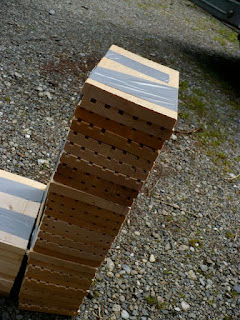
Glen Valley Organic Farm's resident herbalist, Barb Hinde, is offering four herb walks this season. All walks will take place at Glen Valley Organic Farm.
Come and walk through the herb garden as well as the farm's 8 acres of forest. See how the plants grow in cultivated gardens as well as in their natural habitat. Learn about building your own backyard herb garden by understanding the seasonal growing cycle, learning which herbs grow best in this environment, and how to incorporate herbs -- both culinary and medicinal -- into your gardening and cooking.
Dazzle your senses as you touch, taste and feel the herbs and learn how nature has the potential to support good health. Dress comfortably for the weather; we walk rain or shine.
Each walk will highlight herbs in season as the garden and forest floor change and offer an array of herbal options.
About Your Guide
Barb Hinde is a chartered herbalist as well as a registered nutritional consultant. Practicing herbal medicine as well as good nutrition has been a life-long interest for Barb.
Barb grew up on a farm in the Fraser Valley with a parent who loved the earth and believed in the healing power of the body and the plants that Mother Nature provides. She spent time with her father in the garden as well as in the forest, thus starting a life-long love of what the earth has to offer.
After completing courses at Dominion Herbal College, Langara College and several long distance courses, Barb became an herbalist as well as a registered nutritional consultant. She has been growing medicinal and culinary herbs in earnest since 2002.
Dates & Times
Herb Walks will be held at Glen Valley Organic Farm on the following Saturdays in 2011:
- May 28th
- June 25th
- July 23rd
- August 27th
The walks start as 10 a.m. and continue until noon. The walks are following by a question and answer period in the farm's labyrinth garden. Feel free to bring a bagged lunch to enjoy during the Q & A session.
Cost
Each walk costs $25 per person. Pre-registration is required.
Registration
Please register by contacting Barb Hinde at 604-626-0681 or barbhinde (at) gmail (dot) com. Pre-registration is required.

































